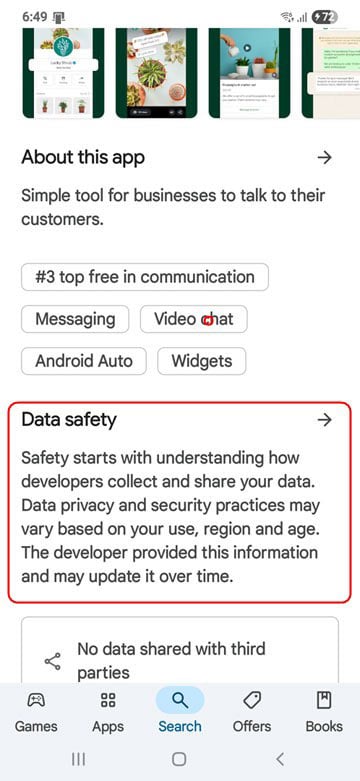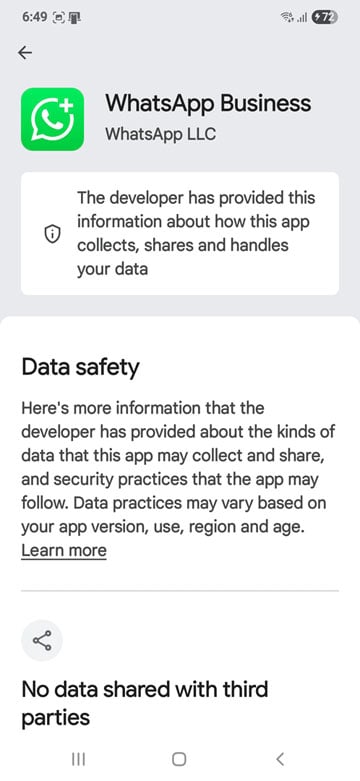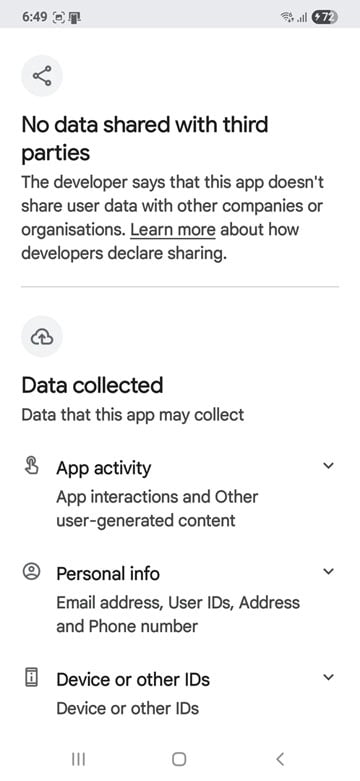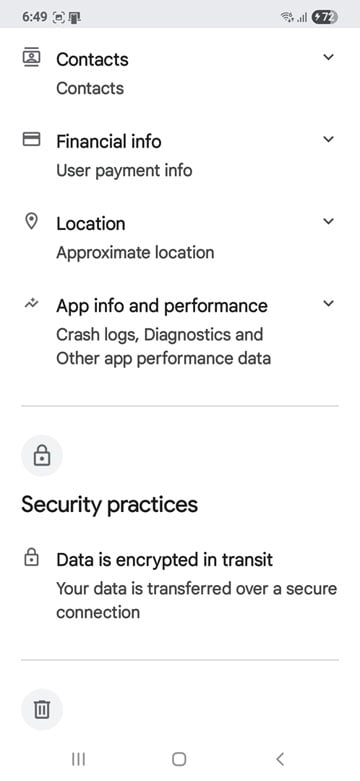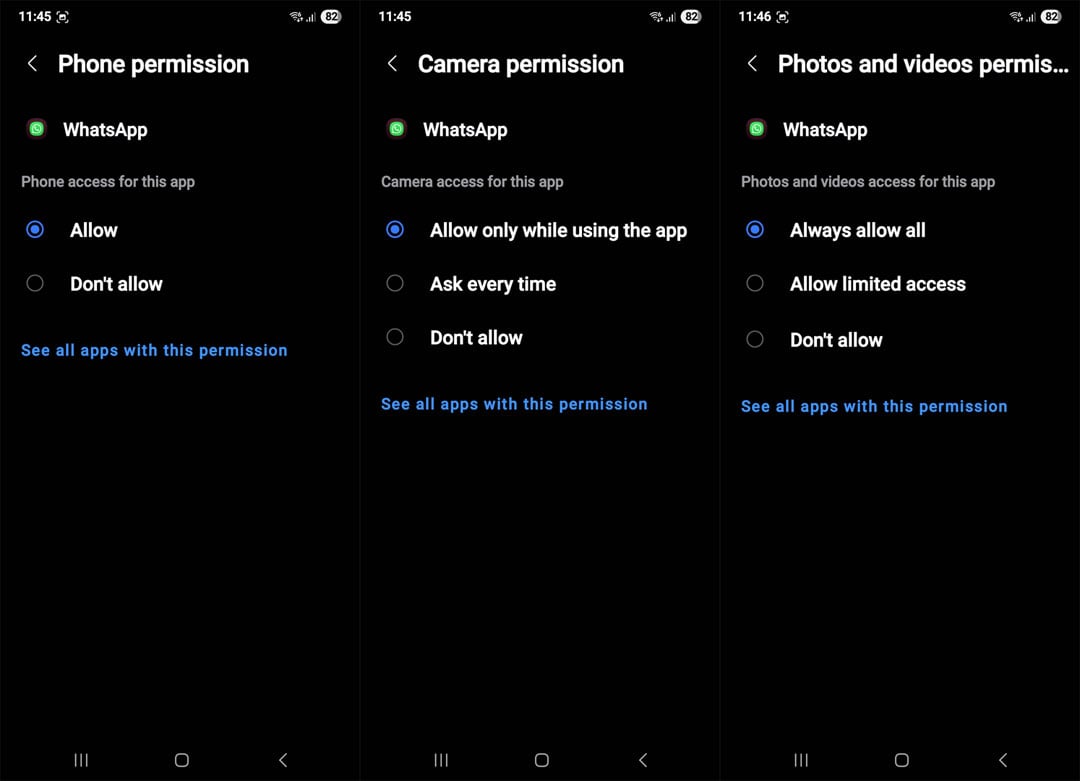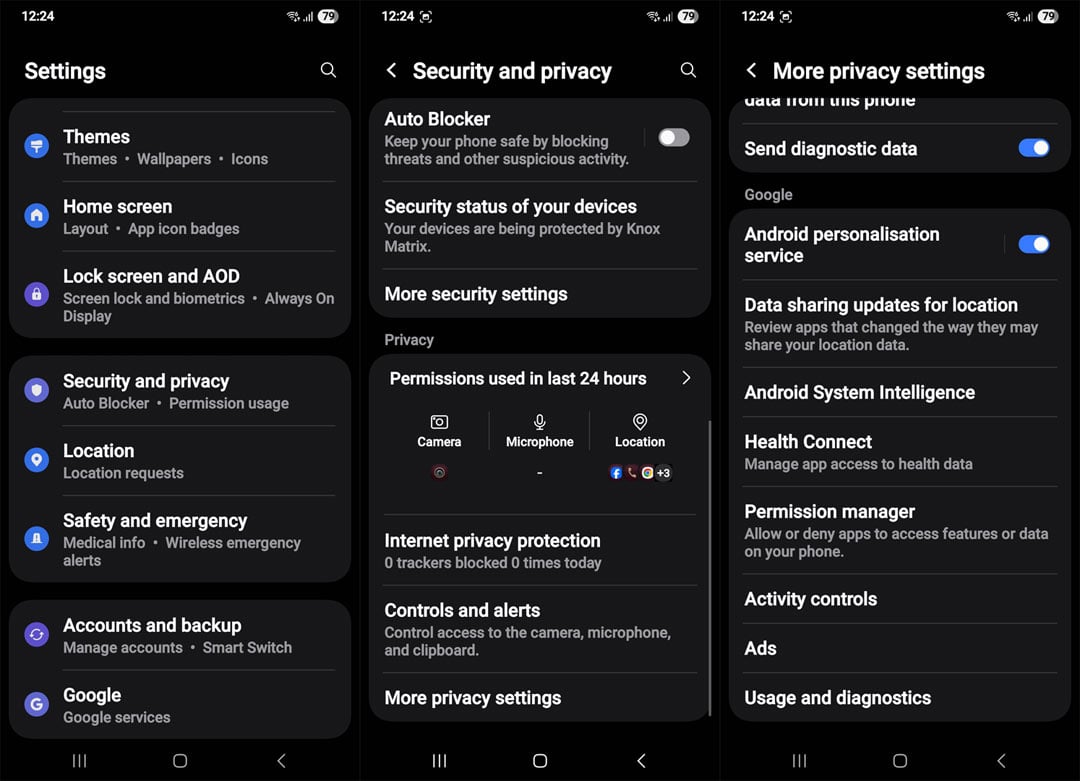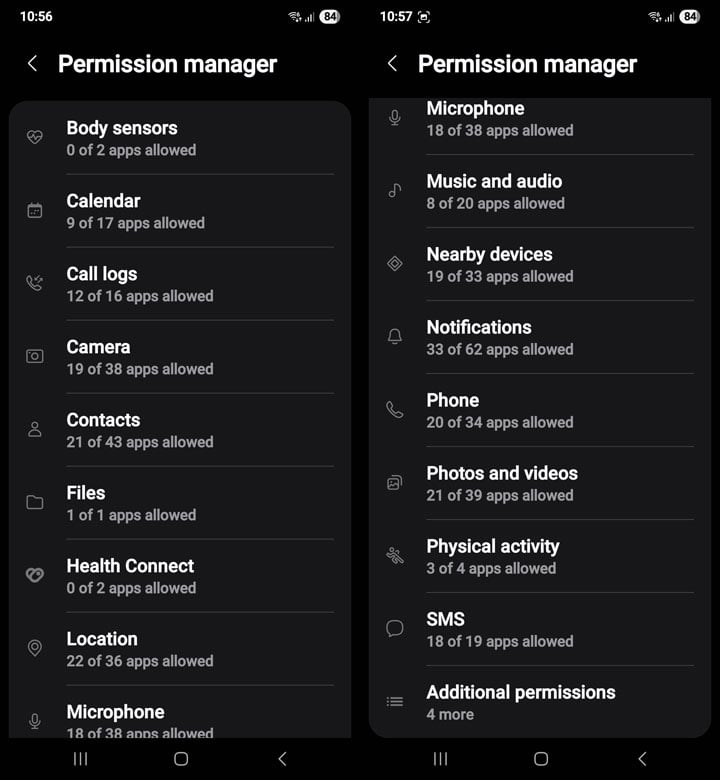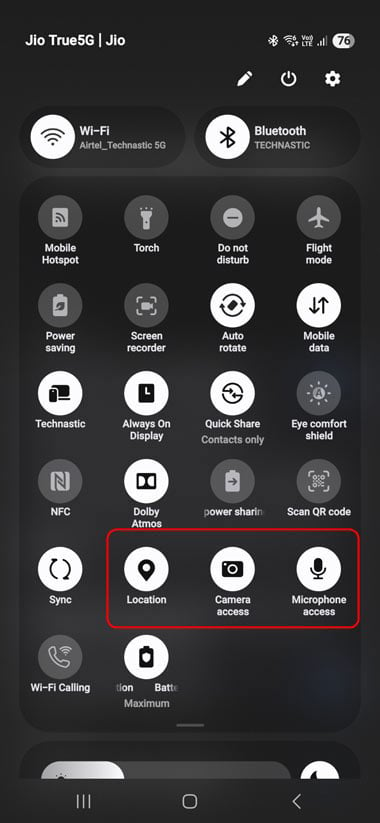Smartphones have increasingly become repositories of sensitive personal information. Most Android users don’t realize the repercussions of unknowingly granting sensitive permissions to apps. This tendency often threatens their privacy and leads to data breaches. This tutorial covers tips to manage app permissions on Android devices and will help privacy-conscious users and beginners take control of their device’s security.
You’ll be surprised to learn that Android offers over 800 permissions, which fall into three categories: Normal, Special, and Dangerous. Therefore, one must be extra cautious about granting app permissions to protect sensitive data and privacy.
What are Android App Permissions?
App permissions are at the core of Android’s security framework. They create boundaries between apps and your personal information. Your apps must ask for permission through Android’s system before using features like the camera, microphone, location, or contacts.
Types of App Permissions
Permissions regulate two main types of access:
- Restricted data – Your contacts, location, messages, call logs, and stored files
- Restricted actions – Recording audio, taking photos, sending notifications, or connecting to paired devices
Before Android 6.0, you had to grant all permissions during installation. Now, apps ask for permissions as they need them. You can approve or deny each request one by one. The system groups permissions based on what they mean for your privacy:
- Install-time permissions – These happen automatically during installation for features with minimal privacy risks
- Runtime permissions – You must grant these explicitly when an app needs access to sensitive data
- Special permissions – These need manual setup in system settings
A good app works even if you don’t allow it some permissions. You might not get all features, but the core functions should remain available.
Sensitive Permissions to Watch for
Android labels specific permissions as “dangerous” because they could affect your privacy, other apps, or how your device works. Apps need your explicit permission for these:
- Location – Tracks where you are (exactly or roughly)
- Camera – Takes photos and videos
- Microphone – Records sounds around you
- Contacts – Sees your address book
- Phone – Makes calls and sees call history
- SMS – Reads and sends texts
- Calendar – Sees and changes calendar events
- Storage – Accesses your photos, videos, and files
- Body sensors – Get health data from sensors
- Physical activity – Tracks walking, biking, and counts steps
Look at whether permission requests make sense for what the app does. A weather app needs your location, but shouldn’t need your contacts or camera. Messaging apps naturally need contacts, SMS, and camera access, but don’t need health data. Smart choices about app permissions will help protect your data.
Checking Permissions Before Installing Apps
Your privacy protection starts before you install an app. The Google Play Store gives you tools to check what permissions apps need. This helps you make better choices about what goes on your device.
Reading the Data Safety Section in the Play Store
The Play Store now shows a Data Safety section to let you check how apps use your information. Here’s how to find it:
- Open Google Play and find your app.
- Look for Data Safety and tap it to view the level of access the app demands.
This section shows what developers tell us about their data practices. You’ll see what they collect, how they use it, and if they share it with others. It’s worth mentioning that app permissions might not match what’s in the Data Safety section. This happens because developers declare what’s in the Data Safety section, while the permissions list shows what the app can technically do.
Identifying Suspicious Permission Requests
Good apps only ask for the permissions they need. Watch out for apps that ask for permissions they don’t need. These unnecessary requests often mean the app collects data for ads or something worse.
Keep an eye on apps that want access to:
- Location tracking
- Contact information
- Camera and microphone access
- Calendar details
- Biometric data
You must ensure that you don’t allow unnecessary permissions, go through the apps’ privacy polices, and read user reviews. Be very careful while granting permissions to apps. The best approach is to pick “Allow only while using the app” instead of “Allow all the time” for location, camera, contacts, biometrics, and microphone.
Managing Permissions for Individual Apps
Your device’s privacy depends on how well you control app access to your data. Android gives you simple ways to check and change these settings whenever you want.
How to Access App Permission Settings
You can easily manage permissions for any app on your Android device:
- Open Settings on your device and tap Apps. Alternatively, press and hold an app icon on your home screen, tap App info, and select Permissions.
- Select the specific app you want to manage and tap Permissions.
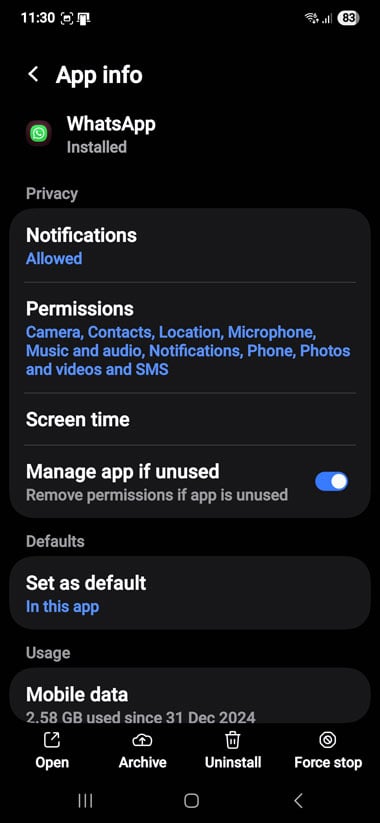
- Here you’ll see lists of allowed and denied permissions for that app. Tap any permission to change its settings.
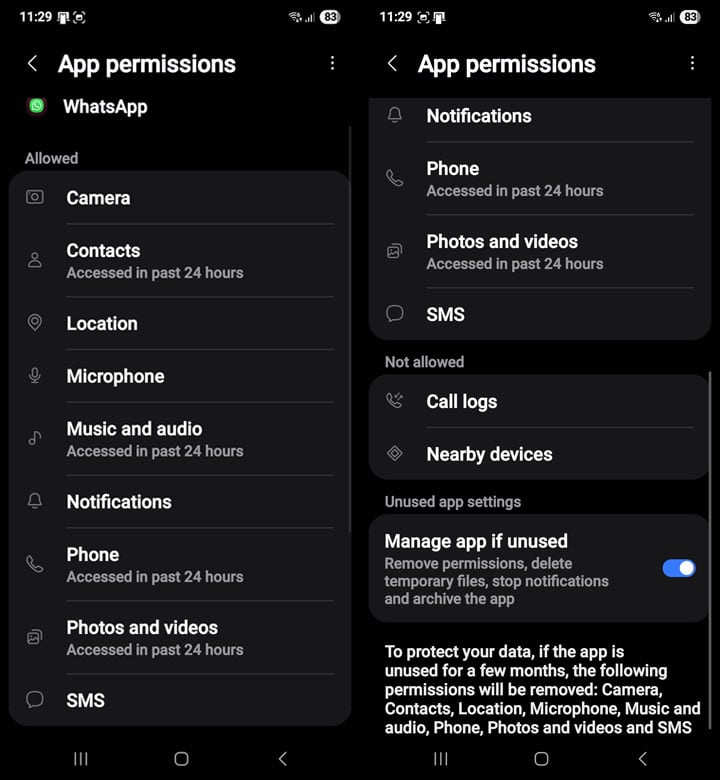
Understanding Permission Options
Android offers different privacy protection levels when you manage permissions. Simple permissions give you two choices: Allow or Don’t allow. These work well for permissions that don’t raise serious privacy concerns.
- Allow all the time: Gives full access even when the app runs in the background (location only)
- Allow only while using the app: The app only gets access when you’re using it
- Don’t allow: Blocks all access to that feature
- Ask every time: Lets you choose whether you want to allow access to a feature every time it’s needed by the app
- Allow limited access: Grant partial access to a feature.
When to Use the ‘Ask every time’ Option
The Ask every time setting will give better control over sensitive permissions. The app must ask for your approval each time it needs access. This works great:
- With apps you rarely use but sometimes need to give permissions
- When you don’t fully trust an app
- To protect sensitive data like your location
- To test which permissions an app really needs
This option helps you track how often apps use your data. You’ll need to respond more often, but you’ll know exactly when apps access your information.
How to Use Android’s Permission Manager
Managing app permissions one by one becomes tedious with dozens of apps on your phone. Android’s built-in tool lets you handle permissions by category, which saves time and effort.
Accessing the Permission Manager
Your Android device’s Permission Manager serves as a central hub to control app access to your phone’s features:
- Open the Settings app on your Android phone.
- Tap Security and Privacy > Privacy.
- Tap Permission Manager.
Samsung users with One UI will find a slightly different path: tap Security & privacy > More privacy settings, followed by Permission manager.
Reviewing Permissions by Category
Permission Manager takes a feature-based approach rather than focusing on individual apps. This helps you see which apps can access your camera, location, contacts, and other features. Category-based permission management helps you spot which features of your phone are most accessed by apps.
Open Android’s Permission Manager, and you’ll see all permission categories like Calendar, Camera, and Contacts, along with the number of apps with access to each.
Each permission category shows a list of apps that requested access. You might be surprised to find several apps with microphone access you didn’t know about.
Revoking Multiple App Permissions at Once
Permission Manager shines at removing unnecessary permissions. It allows you to revoke multiple permissions at once.
Review specific permissions like Location, Microphone, Phone, or Camera carefully. You can change settings for multiple apps right here. Just tap any app in the permission category and pick your preferred setting – Don’t allow, Only while using, or Ask every time. This method is much faster than navigating through separate app settings.
Setting Up Automatic Permission Management
Android’s permission system offers several automatic controls to enhance privacy.
Auto-Reset Permissions for Unused Apps
The permission auto-reset feature came with Android 11. This system protects your privacy by stopping unused apps from accessing sensitive data.
To manage the feature:
- Open your phone Settings and tap Apps.
- Select the specific app you want to modify.
- Toggle the Manage App if Unused option.
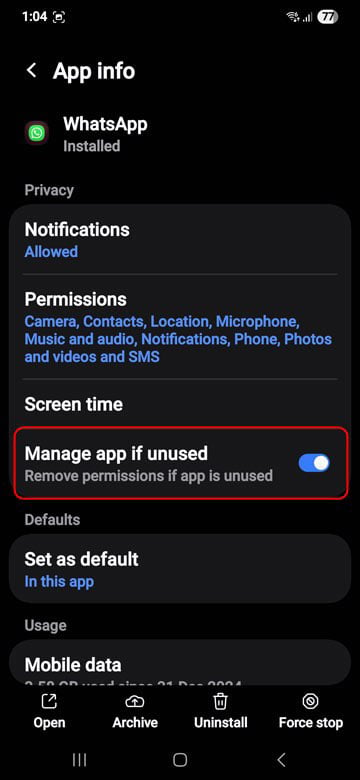
The system automatically revokes runtime permissions that need user approval if you haven’t used the app for a while.
Using Quick Toggles for Camera and Microphone
Android 12 added handy quick settings toggles that block camera, microphone, and location access across all apps with a single tap. Quick Settings let you block sensor access without changing individual app settings. Just swipe down from the top of your screen to access the Quick Settings toggles and turn off Location, Camera Access, and Microphone Access.
If you don’t find these toggles, you can add them as follows:
- Swipe down from the top of your screen to open Quick Settings.
- Tap the pencil icon to edit quick settings.
- Locate Camera access and Microphone access tiles.
- Drag them into your active quick settings panel.
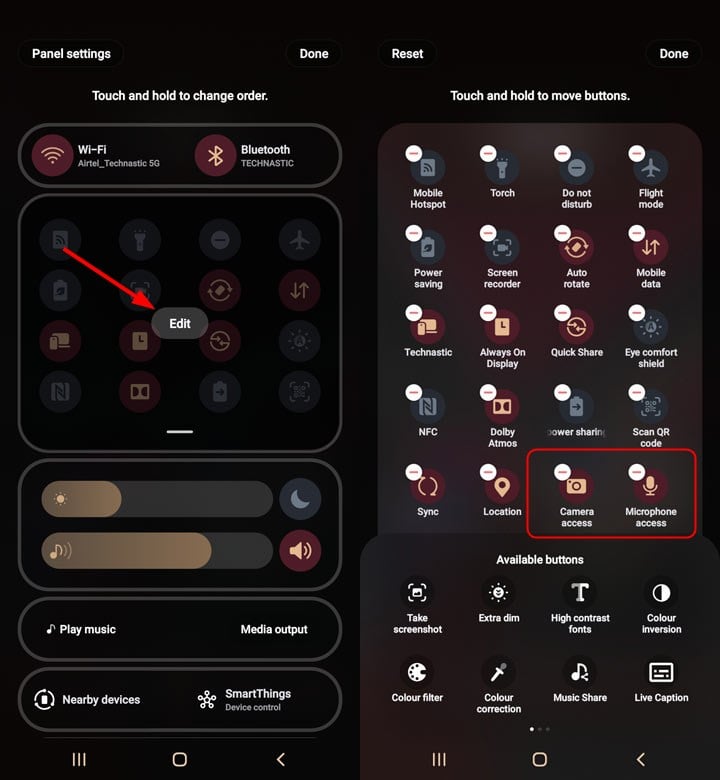
The toggles give you instant privacy control. Disabled apps receive a blank camera feed or silent audio. This feature helps protect your privacy when you need to be sure no app is recording.
Android’s permission system protects our data, yet users often don’t realize its full potential. We can maintain privacy and still enjoy app functionality through proper permission management.
Read Next: 20 Most Useful Android Shortcuts for Doing Things Faster
Featured image courtesy: PNG Tree
